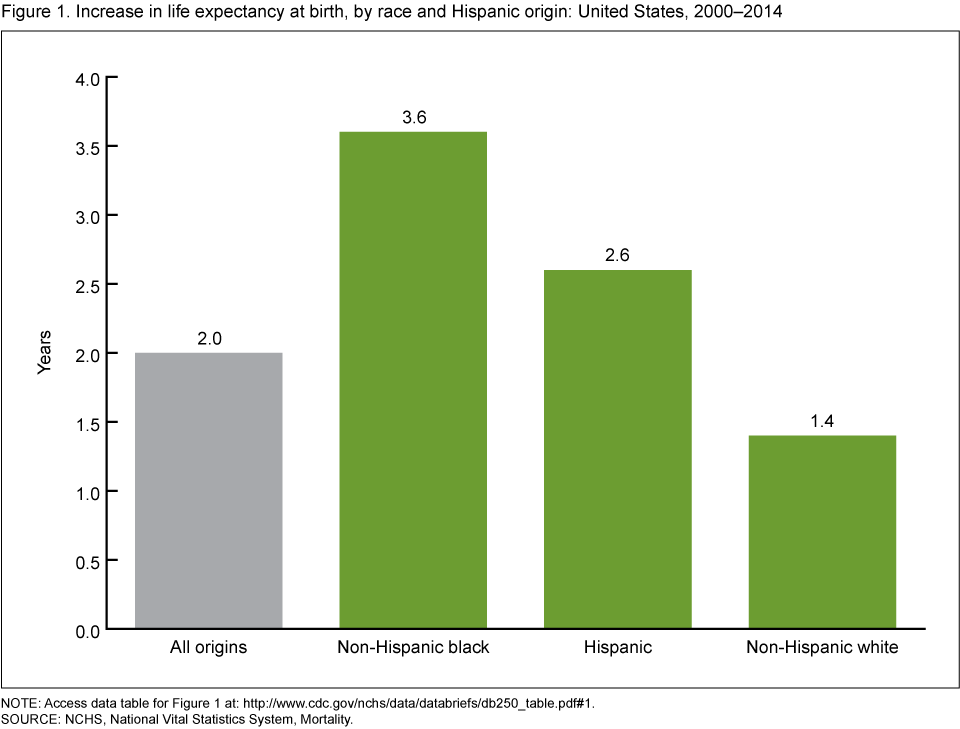The Effect of Changes in Selected Age-specific Causes of Death on Non-Hispanic White Life Expectancy Between 2000 and 2014
Posted on byBetween 2000 and 2014, life expectancy at birth in the United States increased by 2 years. The non-Hispanic black population experienced the greatest gain, followed by the Hispanic population.
The non-Hispanic white population experienced the smallest gain. Changes in life expectancy over time are directly affected by increases and decreases in age-specific death rates and age-specific cause of death rates.
NCHS released a report this week describing the relationship between increases in all-cause age-specific and cause-specific death rates and the change in life expectancy for the non-Hispanic white population between 2000 and 2014 is explored.
Findings:
- Between 2000 and 2014, life expectancy increased by 3.6, 2.6, and 1.4 years, respectively, for non-Hispanic black, Hispanic, and non-Hispanic white persons.
- The 1.4-year increase in life expectancy for non-Hispanic white persons would have been greater if not for increases in death rates due to unintentional injuries, suicide, Alzheimer’s disease, chronic liver disease, and hypertension.
- Increases in death rates due to unintentional injuries, suicide, and chronic liver disease were large enough to increase all-cause non-Hispanic white death rates for ages 25–34, 35–44, and 45–54.
- Increases in death rates due to unintentional poisonings for ages 25–34, 35–44, and 45–54 had the greatest impact on the change in life expectancy for non-Hispanic white persons.
Posted on by
Categories Uncategorized
Page last reviewed: June 3, 2016
Page last updated: June 3, 2016
Content source:
CDC, National Center for Health Statistics


